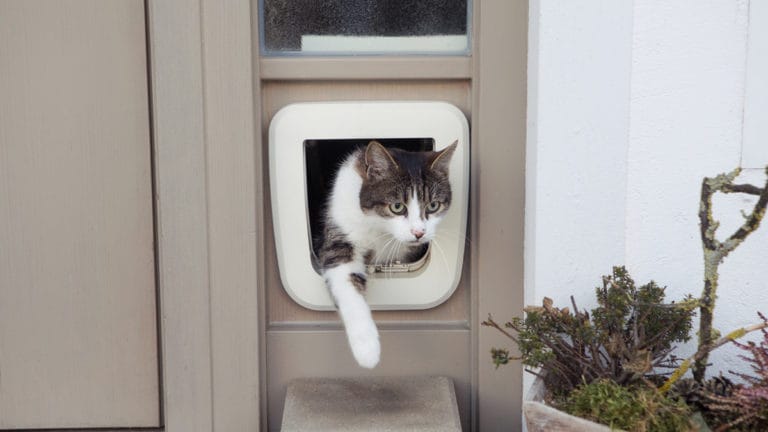Q:
We have a cat named Random who wants to go outside and we don’t know what to do. There are lots of dangerous animals in our area, and we don’t know how to make the outdoors safe for him. What do you think about putting up an invisible electric fence around our yard and then putting a collar on the cat that will shock him every time he tries to go through it? Will the electric shock hurt him? Besides the E-fence, are there alternatives?
A:
Invisible electric fences are not the safest or most humane solution for keeping cats inside yards. In calm circumstances, the fences normally keep cats within the designated boundaries. They can fail if a cat is highly agitated, excited or intent on hunting.
Some cats are easily startled or frightened; others have high prey drives. A cat who is intensely chasing an animal is likely to chase the animal through the electrified zone, despite the shock. The potential reward of a meal on the wing, coupled with the thrill of the chase is the consuming directive, far outweighing the threat of an electric shock. An electric shock also takes the back seat to the survival instinct of escaping a potential predator. I know of one cat who was frightened by the bark of a dog and bolted through the fence. The cat kept on running as far away as possible from both the barking dog and the shock from the invisible electric fence.
Once the cat has bolted through the electrified zone, he will not be able to get back into the safety of his yard since he will not want to endure another painful shock. Avoiding pain is stronger motivation then going back to familiar turf.
There are safer alternatives to electric fences. There is one fence system available that is made specifically to keep cats in the yard, while keeping other animals out. It is installed on top of your existing fence, extending the fence height. At the top there is an added extension that leans in at a 45-degree angle. There is also at least one fencing system that is a complete solution, allowing you to enclose specific areas. This system has many accessories available, including gates. The one potential problem with these fencing solutions is that they do not protect cats from predators that come from the sky, such as hawks and other raptors.
Covered enclosures are a safer alternative for cats. There are many different kinds of cat-centric enclosures that are available in different sizes, shapes and materials. Enclosures and enclosed areas need to have shade, sunny areas, places to climb, sheltered areas, food, water and cat boxes. The enclosures need to be fun, and they should also have enough room for chairs so that the cat’s favorite people can enjoy the outdoors along with their cats.
The safest solution is to not allow your cat outdoors at all. Cats live longer and are healthier when indoors 24/7. Provide a rich indoor environment and lots of stimulation and exercise. Tall cat trees and towers, interactive toys, clicker training, play and interaction with their favorite people will help keep your cat happy and safe.
By: Marilyn Krieger
Featured Image: Via Shutterstock/ivandan
Share:









